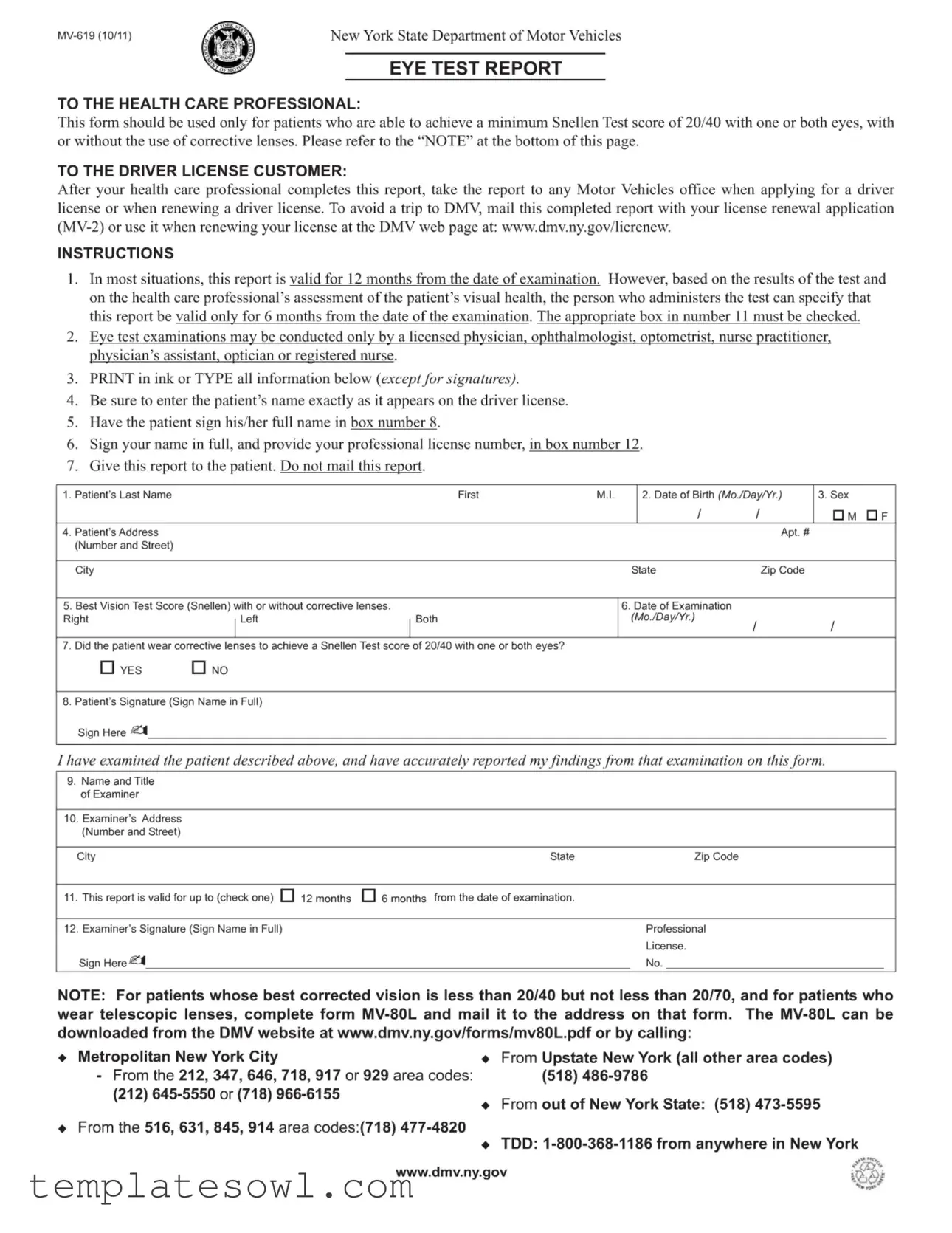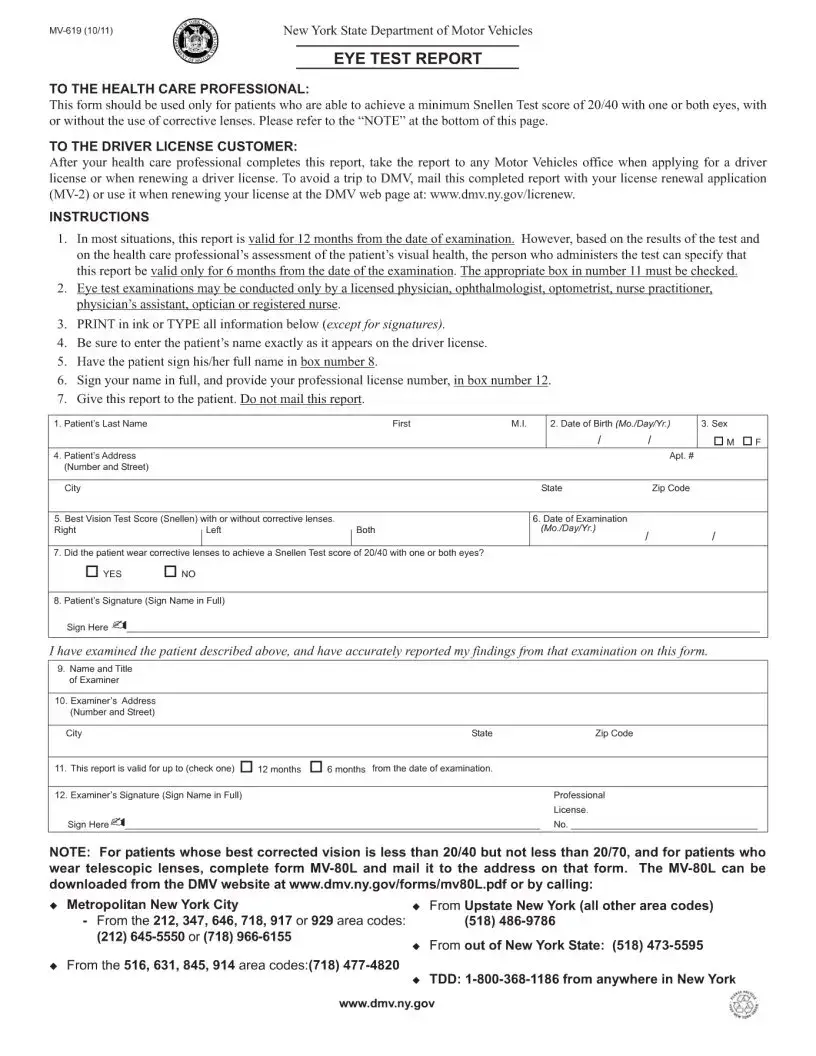1. What is the DMV Eye Test Report MV-619?
The DMV Eye Test Report MV-619 is a form required by the New York State Department of Motor Vehicles. It is used to document the results of an eye exam administered to individuals applying for or renewing a driver’s license. This report ensures that applicants meet the minimum vision standards necessary for safe driving.
2. Who can administer the eye test for the MV-619 form?
Only licensed healthcare professionals can administer the eye test for the MV-619 form. This includes physicians, ophthalmologists, optometrists, nurse practitioners, physician assistants, opticians, and registered nurses. It is crucial that the test is performed by someone qualified to ensure accurate results.
3. What are the vision requirements for the MV-619 form?
To qualify for the MV-619 form, a patient must achieve a minimum vision score of 20/40 in one or both eyes. This can be with or without corrective lenses. If an applicant’s vision is below this threshold, a different form, MV-80L, must be completed.
4. How long is the MV-619 form valid?
The form is typically valid for 12 months from the date of examination. However, in certain cases, based on the health care professional’s recommendations or test results, it may be valid for only 6 months. This option can be specified on the form itself.
5. Where should I take or send the completed MV-619 form?
After completion, the MV-619 form must be taken to any DMV office when applying for or renewing a driver license. Alternatively, you can mail the completed report along with your license renewal application (MV-2) to avoid an additional trip to the DMV.
6. How do I fill out the MV-619 form?
The MV-619 form should be filled out in ink or typed, with careful attention to ensure that the patient's name matches exactly as it appears on their driver license. The healthcare professional must also include their own full name, license number, and signature at the appropriate sections of the form.
7. What should I do if my vision doesn't meet the requirements?
If your best corrected vision is less than 20/40 but at least 20/70, you will need to fill out form MV-80L instead of MV-619. This form addresses specific conditions and can be downloaded from the DMV website for convenience.
8. Can the MV-619 form be mailed by the healthcare professional?
No, the healthcare professional should not mail the completed MV-619 form. It is the responsibility of the patient to submit the form to the DMV office or include it with their license renewal application.
9. What should I do if I forget to bring the MV-619 form to the DMV?
If you forget to bring the MV-619 form when you visit the DMV, you may experience delays in your application or renewal process. It is advisable to schedule another appointment after obtaining the necessary documentation, as the DMV requires this form to proceed with your license application or renewal.
10. Is there a specific process for the eye exam with the MV-619 form?
The eye exam that leads to the completion of the MV-619 form typically includes standard vision tests, such as the Snellen chart. It is crucial for healthcare professionals to accurately report their findings on the form based on the results of this examination. After the exam, the healthcare provider will sign the form and give it to the patient, ensuring all sections are correctly filled out.

